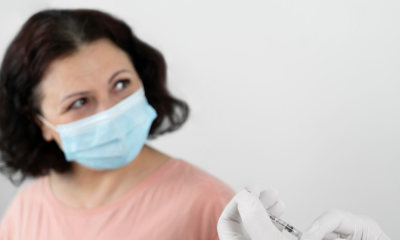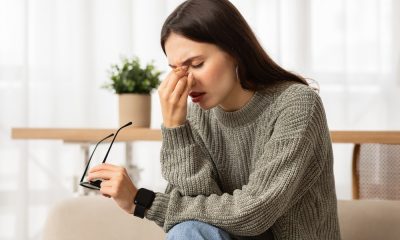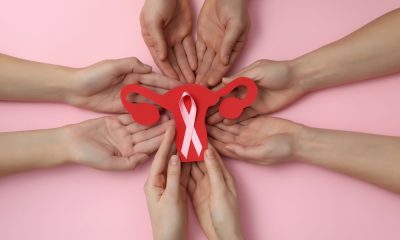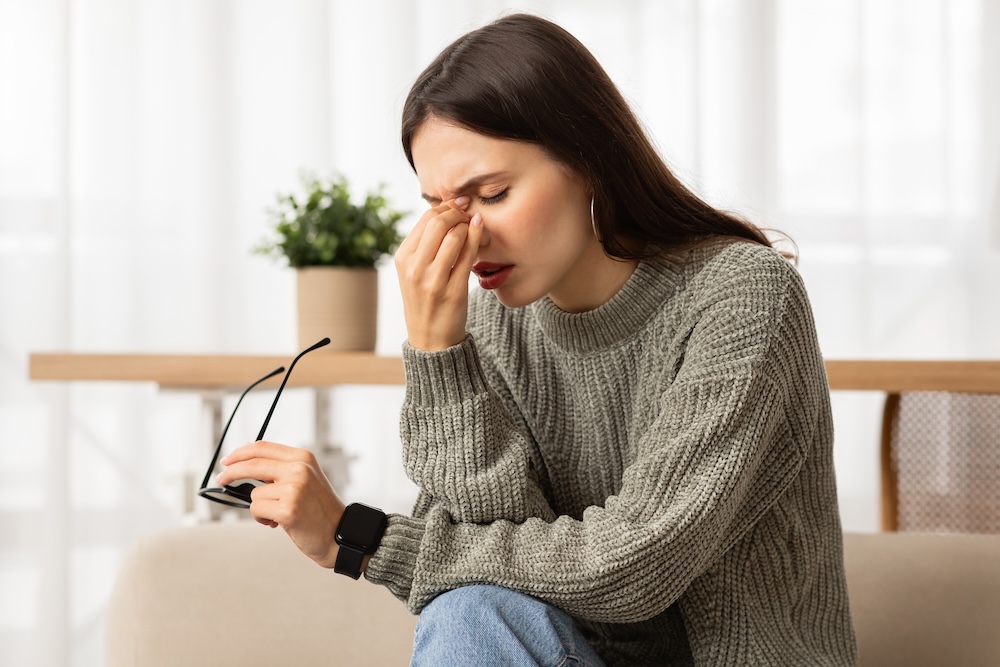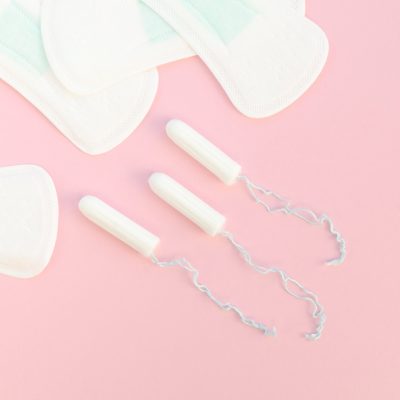Hormonal health
Tens of thousands demand menstrual leave to be written into UK law
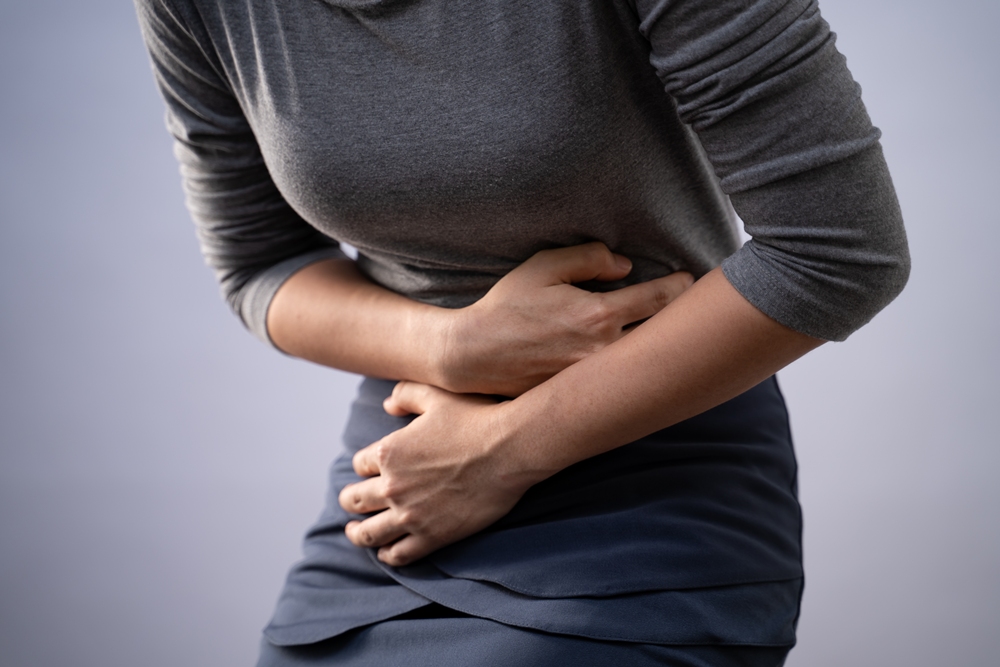
More than 65,000 people have signed a petition for menstrual leave to be added to UK employment rights law.
The campaign needs 100,000 signatures for a parliamentary debate.
It was launched by Scots mum Michelle Dewar, who endured chronic pain for nine years before being diagnosed with endometriosis – a condition where tissue similar to the womb lining grows outside the womb.
Dewar wants the UK to follow Portugal, which recently introduced paid leave for people with similar conditions. She says protections must include no loss of pay, benefits or seniority.
Endometriosis UK has welcomed the petition but argues the government should go further and recognise menstrual health conditions such as endometriosis and adenomyosis as chronic diseases that deserve the same workplace support as illnesses such as diabetes or asthma.
Writing in the Scottish Sun, Emma Cox, chief executive of Endometriosis UK, said workplace discrimination remains widespread due to limited understanding.
“The taboo and embarrassment around ‘women’s issues’ makes the topic hard or impossible to discuss with managers,” she said.
Examples include fears about being made to wear light-coloured uniforms during heavy bleeding, fluctuating symptoms that lead to staff being unfairly labelled as “flaky”, and absence management policies that penalise people for their condition.
The charity says absenteeism caused by heavy and painful periods, endometriosis, fibroids and ovarian cysts costs the UK economy nearly £11bn each year.
Endometriosis UK is calling for the Employment Rights Bill to require menstrual health action plans in workplaces, giving staff clear guidance on support.
It also wants the NHS to cut diagnosis times, which average eight years and 10 months for endometriosis, and to extend that target to adenomyosis too, aiming for one year or less by 2030.
Cox warned that the term “menstrual leave” could be misleading.
She said: “We fear the term ‘menstrual leave’ could be misunderstood to imply it is for everyone who has periods and could lead to discrimination, or perpetuate the myth that it is ‘normal’ to have severe symptoms and that those who can’t cope are ‘weak’.”
The charity runs an Endometriosis Friendly Employer Scheme and workplace training to help organisations understand the impact of both endometriosis and adenomyosis.
Hormonal health
Study reveals why women more likely to get severe long Covid
Opinion
Swimming, periods and finding freedom in my body

By WUKA sports ambassador, Hannah Miley MBE 3x Olympian & Commonwealth champion
I started swimming when I was really young, I just loved being in the water.
The pool quickly became my second home, the place where I felt most like myself. I wasn’t a natural swimmer, but I loved to work hard, and racing gave me that outlet for my competitive side.
There was something about the rhythm of the strokes, the smell of chlorine, and the quiet hum beneath the surface that made me feel free.
I got my first period around age 12, and it was daunting. My body was changing, and I didn’t know what that meant for my swimming.
Wearing a swimsuit every day made me feel exposed, and I just assumed everything I was going through (heavy bleeding that lasted up to two weeks, cramps so bad they left me doubled over) was normal.
There were moments that really knocked my confidence: not realising my tampon string was visible, or climbing out of the pool to find blood running down my leg.
At competitions, I’d sometimes sit on my towel because I’d leaked through.
The heavy bleeding left me anaemic and constantly tired, but I kept pushing through. I wanted to swim at the highest level I could even if it meant battling my body every month.
Competitions & The Pill
I’ll never forget the 2004 Commonwealth Youth Games. My period started mid-competition, and during one race, the cramps hit hard.
Swimming through that pain was frustrating, all that training felt wasted. When I saw my GP back home, I was told the best way to “fix my period problems” was to go on the pill.
Those two words, fix and problems, shaped how I thought about my body for years.
At first, the pill seemed like the perfect solution. No more painful, unpredictable periods! I ran packets back to back to skip bleeds during competitions, thinking I was being smart.
What I didn’t realise was that the seven day break wasn’t a real period at all, it was a withdrawal bleed. I thought I was in control of my cycle, but I was actually masking it.
I didn’t understand how important my hormones were for health, recovery, and performance.
On the surface, everything looked fine. Beneath that, I was struggling. Under-fuelling, getting ill before big meets, and picking up constant shoulder and knee niggles.
But I didn’t connect any of it to my hormonal health. The pill blurred the picture, and for years, I lived in fear of my period returning at the “wrong” time.
Nothing compares to the emotion you feel when you make an Olympic team.

When I realised I had qualified for my first Olympics in 2008, it was surreal the culmination of years of early mornings, long sessions, and relentless dedication.
Standing on the pool deck with “Team GB” on my kit felt like stepping into a dream that little Hannah could only have imagined.
Racing around the world, representing Scotland and Team GB, was the greatest honour of my career.
Each competition taught me more about resilience, discipline, and the incredible things the human body can do when you push it to its limits.
I went on to swim at three Olympic Games, and while each one was different, they all shaped me not just as an athlete, but as a person learning to listen to and respect her body.
It wasn’t until 2020, during lockdown, that I finally came off the pill after more than 15 years. I was speaking to Dr Georgie Bruinvels when she asked a simple but powerful question:
“When was the last time you actually had a period?”
That question stopped me in my tracks. The answer? Not since before I started the pill as a teenager, over 15 years ago.
I learned that I should have taken longer breaks to let my hormones reset after five years.
It was probably mentioned when I first started but at 15 the chances of me remembering were going to be slim. I wished someone had reminded me.
For the first time, I began tuning into my body, tracking my cycle, adjusting my nutrition, and paying attention to the signals I’d ignored for so long. The difference was incredible.
My periods now last about five days, my cramps are mild and manageable, and I finally feel in sync with my body instead of fighting against it. And no little pill to remember to take each day.
The knowledge I have now would’ve been game changing for me as a young athlete.
Finding Freedom Again — This Time, on My Period
WUKA Sports Ambassador
Becoming a WUKA Sports Brand Ambassador felt like everything coming full circle.
To work with a company whose values aligned with my mission, supporting and empowering female athletes was incredible.
As an athlete, I only ever used tampons because I thought that was my only option.
But discovering products like period underwear and period swimwear has completely changed how I feel about my body and my period.
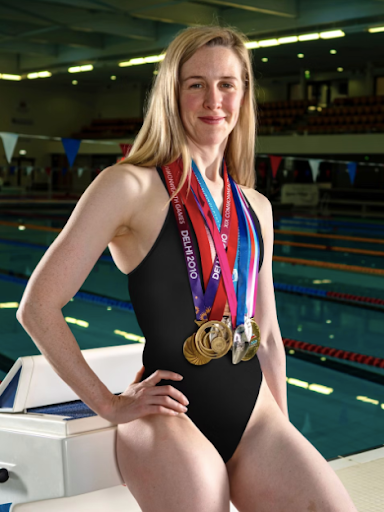
The first time I tried WUKA period pants, I couldn’t believe how comfortable they were. No rustling, no movement, and no fear of leaks. I actually forgot I was wearing them!
And their period swimwear? Game changer. No more worrying about climbing out of the pool and noticing blood running down my leg just confidence and freedom.
I can’t help but think how different my experience as a teenager could have been if products like this had existed then.
They would’ve given me comfort, reassurance, and a sense that my period wasn’t something to hide or fear.
That’s why I’m so passionate about opening up conversations around periods in sport.
For so many young athletes, missing training isn’t an option, but competing while bleeding can be stressful and distracting.
Period-proof swimwear can take away that anxiety — letting you focus on your performance, not your period.
What I’ve Learned
My journey has taught me that periods aren’t a “problem” to be fixed, they’re a natural, powerful part of who we are.
With the right knowledge, support, and tools, we can work with our bodies, not against them.
Period proof swimwear might seem like a small thing, but for a young swimmer, it can mean the world. It can mean the difference between fear and freedom, between shame and Confidence.
Periods are not the enemy of performance.
Ignoring them is.
Find out more about Wuka at wuka.co.uk
Wellness
Half of countries lack endometriosis care policies
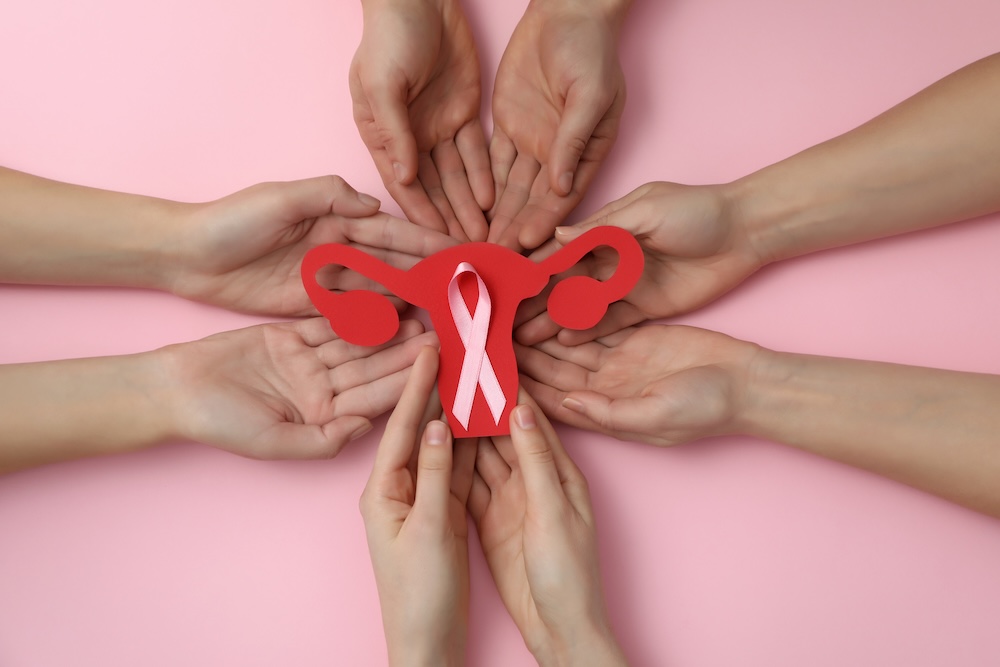
Nearly half of countries lack national policies or clinical guidance for endometriosis care, a new global review has revealed.
Endometriosis affects about one in ten women and girls worldwide. Across 194 WHO member states, researchers found striking disparities in care.
More than a quarter of countries have no publicly available clinical recommendations, and only 7 per cent have government-endorsed care guidelines.
In many places, the only guidance comes from informal sources such as advocacy sites or social media, leading to inconsistent care.
Europe had the widest guideline availability, while many low- and middle-income countries had little or none.
Devon Evans, assistant professor at the University of Manitoba, said: “Our findings show that many people living with this chronic condition are navigating care in regions where no official recommendations exist.”
A companion analysis reported that half of all countries had no policy information available.
Ninety-six countries recognised endometriosis as a national problem, 48 put it on the political agenda, and 12 adopted policies for a national strategy.
Notable examples include national action plans in Australia and France that are being implemented and evaluated.
Tatjana Gibbons if from the University of Oxford’s Nuffield Department of Women’s & Reproductive Health.
Gibbons: “Despite increasing awareness of endometriosis, addressing the challenges faced by those living with the condition requires coordinated national strategies developed in collaboration with policymakers, advocates and patients themselves, to reduce its global burden.”
The authors called for governments, medical societies and patient groups to collaborate on clear, region-specific care standards to cut diagnostic delays, improve quality of life and ensure equitable access to treatment.
An accompanying editorial urged a shift “from awareness to action”, with WHO noting the condition’s physical, mental and socioeconomic impact and the need to demonstrate that policies and guidelines translate into real-world improvements.
-

 News3 weeks ago
News3 weeks agoDozens of women report suffering painful burns after using Always sanitary towels
-
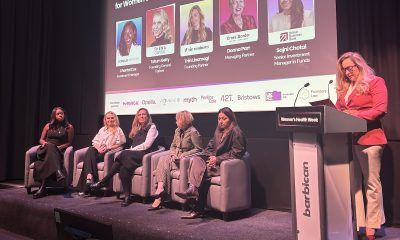
 News4 weeks ago
News4 weeks agoCutting through the noise in femtech – key takeaways from Women’s Health Week 2025
-

 News3 weeks ago
News3 weeks agoAI embryo selection tool wins European approval
-

 Mental health6 days ago
Mental health6 days agoOpinion: Not ‘just stress’ – How hormonal changes affect women’s brain function
-
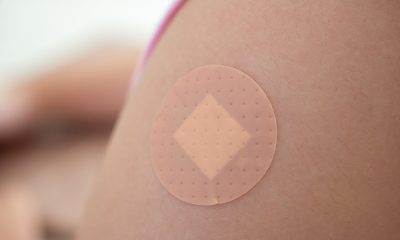
 Menopause3 weeks ago
Menopause3 weeks agoTestosterone patch shows promise for menopausal women
-

 Fertility4 weeks ago
Fertility4 weeks agoScientists develop breakthrough approach to detecting endometriosis in menstrual blood
-

 Features3 weeks ago
Features3 weeks agoFrom SEO to GEO: How women’s health brands can get found in the age of AI
-
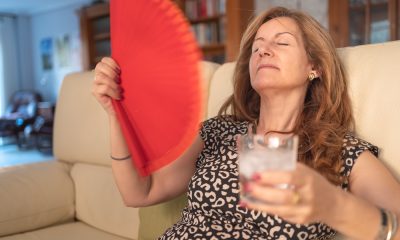
 Hormonal health3 weeks ago
Hormonal health3 weeks agoFDA approves new menopause drug to treat hot flashes and night sweats




